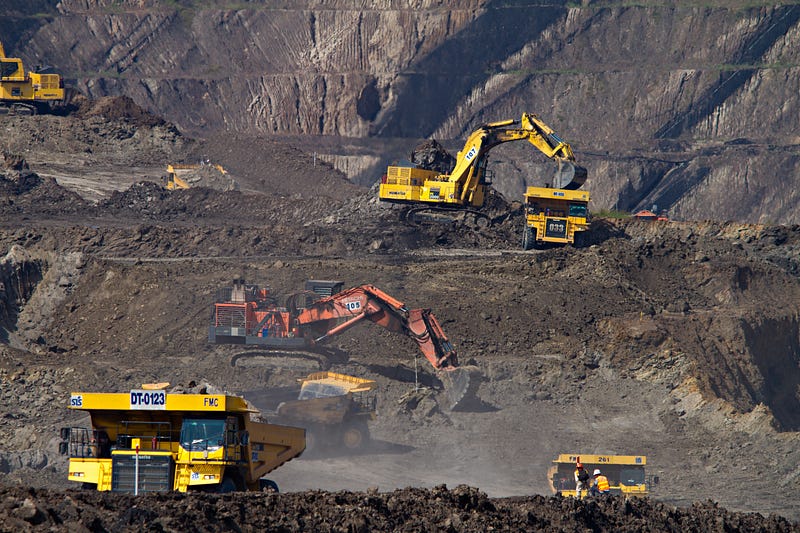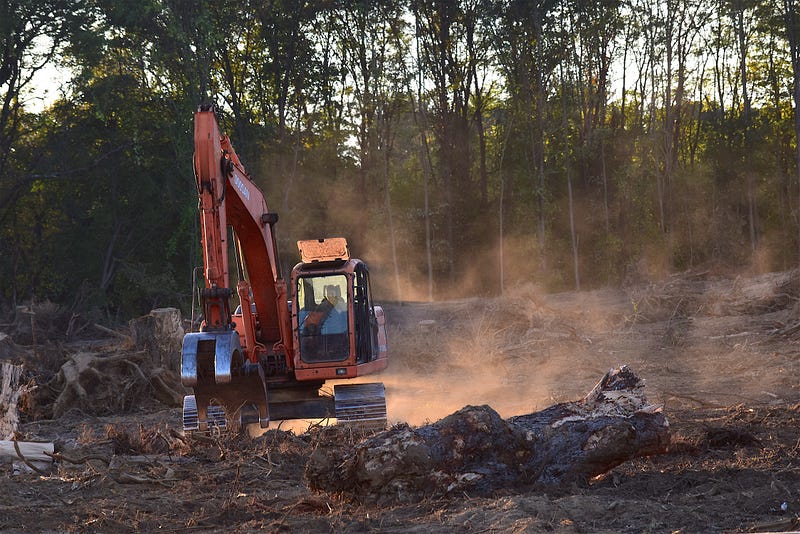Innovative Solutions: Can Trees Replace Mines for Metals?
Written on
Chapter 1: The Need for Change
In today's world, we appreciate our smartphones, electric vehicles, and other technological advancements. However, the extraction of metals used in these devices often relies on destructive mining practices that exploit labor and release harmful pollutants, contributing significantly to climate change. Fortunately, a growing number of scientists are exploring an intriguing alternative: using forests instead of mines. This concept suggests that miners could transition into conservationists, nurturing forests that yield metals like gold, nickel, and copper, thus paving the way for a sustainable technological future. But is this a realistic vision or merely a fantasy?
Before delving into the promising prospects of "plant mining," it's essential to understand the significant drawbacks of traditional mining. These include logistical challenges, land degradation, carbon emissions, and extensive processing requirements.
Section 1.1: The Mining Dilemma
Modern technology requires various metals such as gold, nickel, copper, lithium, and neodymium. Unfortunately, these resources are unevenly distributed across the globe. Many of the richest deposits are situated in ecologically sensitive regions, like the massive copper mines in the Amazon rainforest. This geographical disparity necessitates complex logistics to transport materials to manufacturing sites, thereby increasing the carbon footprint of our devices.
You might already recognize that mining in places like the Amazon is detrimental. These operations are a leading cause of deforestation. Establishing a mine requires clearing large areas for not only the mine itself but also for access roads, worker housing, and agriculture to support the workforce. This process can lead to the obliteration of vast swathes of fragile rainforest, meaning that the very metals in our gadgets could be driving significant ecological destruction.

Moreover, after extracting these metals, additional processing is necessary to separate them from the ore. This involves heating the ore to extreme temperatures, which requires vast energy resources and often results in the emission of toxic gases and carbon dioxide. The situation worsens as mining operations often introduce harmful substances into local waterways, leading to the contamination of entire ecosystems.
Section 1.2: The Promise of Plant Mining
So, how can forests provide a solution? The concept hinges on the natural ability of certain organisms to accumulate metals. For instance, heavy metals like mercury can bioaccumulate in aquatic life, leading to increased concentrations up the food chain. While filter feeders may not accumulate much due to their short lifespan, larger predators can ingest significant amounts over time, posing health risks to humans who consume them.
Instead of relying on traditional mining methods, scientists are investigating the potential of trees to extract metals from their environments through bioaccumulation. Although trees aren't at the top of the food chain, they are excellent bioaccumulators. Their deep roots interact with the water table, and the mycorrhizal fungi associated with their roots can break down rocks, releasing metals into the trees.

Some tree species, known as hyperaccumulators, are particularly adept at this process. For example, the Caledonian tree Pycnandra acuminata can produce sap that contains up to 25% nickel. By tapping these trees in a manner similar to maple syrup extraction and refining the sap, we can obtain nickel in a more environmentally friendly way than traditional mining methods.
The first video, "I Made Money Grow On Trees," discusses how scientists are exploring tree-based methods to source metals sustainably.
While hyperaccumulators like Pycnandra acuminata are rare, other species like macadamia trees also show promise in accumulating vital metals. As researchers discover more hyperaccumulator species, it may be possible to selectively breed or genetically modify them to enhance their metal accumulation properties, ultimately making plant mining a more cost-effective and sustainable alternative to traditional methods.
Chapter 2: Challenges Ahead
The second video, "How to Believe that Money Does Grow on Trees," explores the potential of using trees to harvest metals while considering environmental impacts.
However, transitioning to this model is not without challenges. We need to consider the land required to cultivate these forests and the potential ecological consequences of monoculture farming, as seen in the palm oil industry. Single-species plantations can threaten biodiversity and create vulnerabilities within ecosystems.
To mitigate these issues, cultivating a diverse range of trees that extract different metals could help maintain ecological balance. Yet, we must be cautious; animals that consume these trees could inadvertently accumulate toxins, leading to health risks for humans who consume them.
Striking a balance between plant mining, vertical farming, and traditional mining could offer a sustainable solution, but this is still an emerging field of research. The ultimate goal is to determine an environmentally friendly approach that minimizes harm while meeting our metal needs.
In conclusion, while the notion that money can grow on trees seems fantastical, the potential for hyperaccumulator trees to sustainably yield valuable metals is a real possibility. Achieving this vision hinges on our ability to navigate the complexities of ecological balance and sustainable practices.